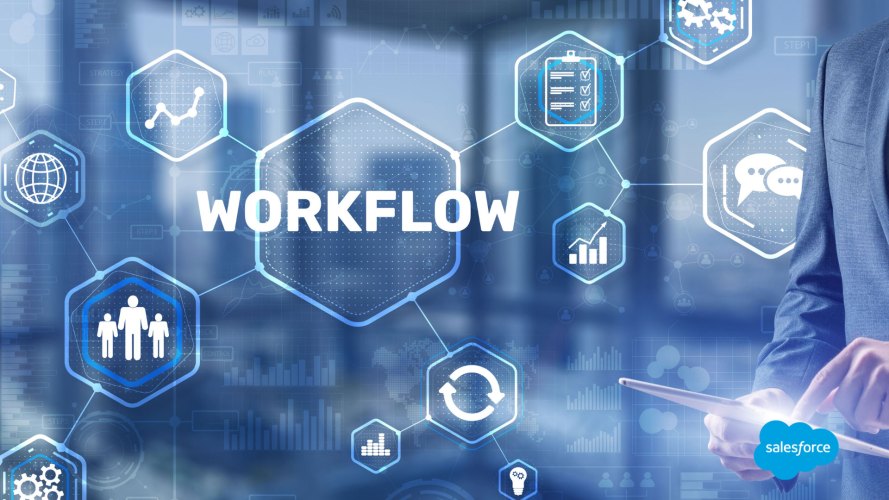Unveiling the Power of Customer Strategy Frameworks: A Comprehensive Guide



Explore the power of Customer Strategy Frameworks in our insightful piece. Uncover proven methodologies on Salesforce to refine customer interactions, foster loyalty, and strategically propel your business towards unparalleled success. Dive into the art of customer-centric growth.
In today’s fiercely competitive business landscape, crafting a customer strategy that goes beyond mere transactions and fosters enduring customer relationships is imperative. A well-structured Customer Strategy Framework serves as a guiding light, helping businesses navigate the complex journey of understanding, acquiring, and retaining customers. In this article, we will delve into the concept of Customer Strategy Frameworks, their importance, and the key components that constitute an effective strategy.
Understanding Customer Strategy Framework
At its core, a Customer Strategy Framework is a comprehensive approach designed to create value for both customers and the business. It’s a strategic blueprint that aligns a company’s objectives with customer needs and expectations. Such a framework provides a structured road map for achieving customer-centric goals, ultimately enhancing customer satisfaction, loyalty, and profitability.
The Importance of Customer Strategy Framework
- Customer-Centric Approach: In today’s customer-centric world, understanding and meeting customer needs is paramount. A well-defined framework ensures that all business activities, from product development to marketing and customer service, are aligned with the customer’s perspective.
- Competitive Advantage: A well-executed Customer Strategy Framework can set a business apart. By delivering superior customer experiences and addressing unique pain points, businesses can carve out a distinct market presence.
- Customer Loyalty: Loyal customers are not only repeat buyers but also brand advocates. A solid framework can help in fostering trust and long-term relationships with customers, resulting in higher retention rates.
- Innovation and Growth: Understanding customer feedback and preferences is key to innovation. A Customer Strategy Framework encourages businesses to adapt and evolve their offerings, ultimately driving growth continuously.
Components of an Effective Customer Strategy Framework
- Customer Segmentation: Begin by dividing your customer base into segments based on demographics, behaviour, and needs. Segmentation enables personalised marketing, communication, and product/service offerings tailored to the unique characteristics of each group.
- Customer Journey Mapping: Understand the customer’s journey from initial contact to post-purchase interactions. This step helps identify key touchpoints and moments of truth, allowing businesses to optimise these interactions.
- Value Proposition: Clearly define the value your product or service provides to customers. What problems does it solve? What benefits does it offer? Your value proposition should resonate with the identified customer segments.
- Customer Feedback and Insights: Regularly gather customer feedback through surveys, social media, or customer service interactions. This data provides valuable insights into customer preferences, pain points, and areas for improvement.
- Omnichannel Experience: In today’s digital age, customers interact with businesses through websites, mobile apps, social media, and more. Ensure a seamless, consistent experience across all touchpoints.
- Employee Training and Engagement: Your employees are pivotal in delivering exceptional customer experiences. Invest in training programs and initiatives that empower employees to understand and meet customer needs.
- Data Analytics: Leverage data analytics to derive actionable insights from customer data. Use this information to fine-tune your customer strategy, personalise offers, and predict future trends.
- Continuous Improvement: Customer strategy is dynamic. It should be a dynamic framework that evolves with changing customer needs and market conditions. Regularly review and adjust your strategy as needed.
Implementing the Customer Strategy Framework
- Leadership Commitment: Building a customer-centric culture starts at the top. Company leadership must endorse and actively support the customer strategy.
- Cross-Functional Collaboration: Successful implementation often requires collaboration across various departments, including marketing, sales, product development, and customer service.
- Technology and Tools: Invest in the necessary technology and tools to support your customer strategy. Customer relationship management (CRM) software, analytics platforms, and customer support systems can streamline processes.
- KPIs and Metrics: Establish key performance indicators (KPIs) and metrics to measure the success of your customer strategy. These could include customer satisfaction scores, lifetime value, and Net Promoter Score (NPS).
- Feedback Loops: Create feedback loops that allow you to gather customer insights and adjust your strategy accordingly continually.
- Training and Education: Ensure that all employees, especially those in customer-facing roles, are well-versed in the customer strategy and its implementation.
Elevate Your Customer Strategy with Salesforce’s CRM
In a world where businesses strive to excel and meet evolving customer demands, a powerful CRM solution is not just an advantage; it’s a necessity. Salesforce’s CRM is an innovation, simplifying the complex, and propelling your business forward. With a relentless focus on enhancing user experiences, streamlining operations, and delivering exceptional customer service, Salesforce equips you with the tools you need to conquer the market. It’s time to take your business to the next level with Salesforce’s CRM – the key to unlocking unparalleled success and staying ahead of the competition.



















